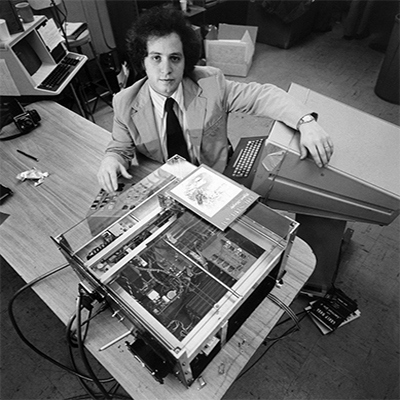A Vice video about an Open Source Outer Space program in Copenhagen, which encourages the building of homemade spacecraft that can accomplish suborbital space flight.
In an Op-Ed in USA Today, New York’s Mayor Bloomberg has some common-sense proposals for tightening gun laws in a way that doesn’t encroach upon the rights of law-abiding gun owners. Of course, it doesn’t address the huge amount of assault weapons already in circulation in the U.S., and there really isn’t an answer for that. Anyhow, I wasn’t aware that the ATF hasn’t had a director since the Bush Administration. An excerpt:
“The president should make a recess appointment to fill the vacancy at the top of the Bureau of Alcohol, Tobacco, Firearms, and Explosives (ATF), which has been without a director for six years. The country would be outraged if the Department of Homeland Security went six years without a confirmed director. Leaving the ATF without a director is also a public safety threat.”
Tags: Michael Bloomberg
Tags: Clive James, Roman Polanski
I watched reruns of the original 1960s Jetsons episodes when I was a kid, but I was unaware until now that the program ran for just one season. That’s amazing considering how much it’s still a part of the culture. When, for example, people talk about Elon Musk’s dreams of the Hyperloop, the show is used as a reference point. From a post about the 24 classic episodes at the Paleofuture blog at the Smithsonian:
“It was 50 years ago this coming Sunday that the Jetson family first jetpacked their way into American homes. The show lasted just one season (24 episodes) after its debut on Sunday September 23, 1962, but today The Jetsons stands as the single most important piece of 20th century futurism. More episodes were later produced in the mid-1980s, but it’s that 24-episode first season that helped define the future for so many Americans today.
It’s easy for some people to dismiss The Jetsons as just a TV show, and a lowly cartoon at that. But this little show—for better and for worse—has had a profound impact on the way that Americans think and talk about the future.”
••••••••••
The original 1963 ABC promo for the show:
Santa is already down on the elves and now technology is taking a potshot. GM has repurposed some auto-manufacturing robots for gift-wrapping duty. From Autoblog: “In addition to stuffing and wrapping boxes, the robots’ duties also include spot welding labels onto the gifts (who even knew that was possible?). The work looks boring and monotonous, but at least these GM robots were able to find a second job.”
Miracle Road–eBook (Upper East Side)
An English woman stricken with great misfortune will soon be offered the help of an unlikely prostitute… a.k.a The Chaldean Whore. Along to help out is Rupert, a middle-aged Korean man. Brace Yourselves… On An Epic Journey Through Miracle Road!
These three souls, each tormented in the past will come together as they try and come to terms with what’s happened to them. Their life regrets and hardships will be recounted. It’s a struggle for happiness… a basic human necessity that’s been RAVAGED, TAKEN and BURIED somewhere deep inside them.
Life goes on. But with looming memories, happiness… HAS A LIMIT!
*Author’s Sneak Peak: One is human. The other two? Suspiciously different.
From “No Flying Cars, But the Future Is Bright,” Virginia Postrel’s contrarian Bloomberg piece, which provides an incrementalist’s argument to those who feel we’ve failed to realize the bold technological visions of the ’50s and ’60s:
“The glamorous future included no digital photography or stereo speakers tiny enough to fit in your ears. No forensic DNA testing or home pregnancy tests. No ubiquitous microwave ovens or video games or bar codes or laser levels or CGI-filled movies. No super absorbent polymers for disposable diapers — indeed, no disposable diapers of any kind.
Nor was much business innovation evident in those 20th century visions. The glamorous future included no FedEx or Wal- Mart, no Starbucks or Nike or Craigslist — culturally transformative enterprises that use technology but derive their real value from organization and insight. Nobody used shipping containers or optimized supply chains. The manufacturing revolution that began at Toyota never happened. And forget about such complex but quotidian inventions as wickable fabrics or salad in a bag.
The point isn’t that people in the past failed to predict all these innovations. It’s that people in the present take them for granted.
Technologists who lament the ‘end of the future’ are denigrating the decentralized, incremental advances that actually improve everyday life. And they’re promoting a truncated idea of past innovation: economic history with railroads but no department stores, radio but no ready-to-wear apparel, vaccines but no consumer packaged goods, jets but no plastics.” (Thanks Browser.)
Tags: Virginia Postrel
It’s difficult to say at this point if the survivalist subculture had anything to do with the huge cache of assault weapons that were used in the Connecticut massacre, but a lot of Americans believe we’re on the verge of imminent collapse. That belief, of course, seems to have no root in reality. The opening of “Newtown and the Doomsday Preppers,” J.M. Berger’s new Foreign Policy article:
“In the wake of a terrible tragedy like Friday’s elementary school massacre in Newtown, Connecticut, most people immediately begin groping for answers.
On Sunday, a family member claimed that Nancy Lanza, mother of 20-year-old gunman Adam Lanza, owned the guns used in the shooting because she was some manner of survivalist. The reasons Adam Lanza did what he did may well be complex. But if the report proves to be true — and many, many reports about the Lanzas have not — it may provide context for his actions.
Survivalism, sometimes referred to as ‘doomsday prepping’ or simply ‘prepping,’ is a movement based on the fear that society is on the brink of imminent, or at least foreseeable, collapse and that it’s sensible to prepare for that possibility.
‘Survivalist’ is a very broad category, and it includes a strikingly diverse collection of people, many of whom, it should be emphasized, are perfectly nice and have fears that are simply amplified versions of those that keep mainstream Americans awake at night. There are at least tens of thousands of prepper families in the United States, covering a broad range of practices, most of which are not particularly unreasonable.
Someone who closely followed the preparedness guidelines issued by the Department of Homeland Security, the Centers for Disease Control, or FEMA might find themselves the butt of ‘survivalist’ jokes from their friends and family. But those friends would have been grateful to have a prepper friend if they lived in certain parts of the East Coast when Hurricane Sandy struck.
Preppers go beyond the average household’s disaster preparedness regime of having a couple flashlights with batteries in them. Their precautions can include everything from keeping a supply of canned goods to stocking generators and building elaborate bunkers. Many preppers also keep guns and a supply of ammunition in anticipation of the breakdown of law and order, as well as for hunting after the local Whole Foods has been abandoned to looters.”
Tags: J.M. Berger
It was surprising to hear that Ray Kurzweil has accepted the position of Director of Engineering at Google. He seems at the point in his career where he’d want to be independent not an employee, but I suppose there are lots of things you can do with Google’s resources that you can’t accomplish on your own. From Neal Ungerleider at Fast Company:
“Ray Kurzweil is best known these days as the world’s foremost Singularity evangelist and as a prophet of a whizbang, techno-utopian future. However, Kurzweil first came to tech fame as a machine-learning guru whose groundbreaking work on voice recognition and optical character recognition changed computing and laid the groundwork for everything from Siri to desktop scanners.
Now, Kurzweil has a new home: Google. On Friday, Google announced that Kurzweil is their newest Director of Engineering. Kurzweil started at Google today with a focus on new machine-learning and language-processing projects.
‘In 1999, I said that in about a decade we would see technologies such as self-driving cars and mobile phones that could answer your questions, and people criticized these predictions as unrealistic,’ Kurzweil said in a statement. ‘Fast forward a decade–Google has demonstrated self-driving cars, and people are indeed asking questions of their Android phones. It’s easy to shrug our collective shoulders as if these technologies have always been around, but we’re really on a remarkable trajectory of quickening innovation, and Google is at the forefront of much of this development.'”
••••••••••
The Kurzweil Reading Machine, 1977:
The future futurist plays his computer composition on TV, 1965:
Tags: Neal Ungerleider, Ray Kurzweil
From the May 20. 1943 Brooklyn Daily Eagle:
“There is living upon Staten Island, an old man who has devoted himself to the rigid and solitary life of the hermit. He has constructed a rude hut in the middle of a forest, where he passes both day and night, refusing to hold a communication with his fellow men, and living wholly upon cold water. He was formerly a sailor; and the only reason he can give for his curious delusion, is, that he was very wild and wicked in his youth, and that God, in order to punish him, has now commanded him to live upon water for the space of forty days. Fourteen of these days of penance have already passed, yet he persists in adhering to his simple diet. He is somewhat pale and emaciated, we are told, but quite vigorous and active. During the last summer, he took the same notion into his head, but after eleven days fasting, found out that his punishment was remitted for a time. It is again laid upon him, and he thinks he will be able to endure to the end.”
I posted something a couple months back about Zappos founder Tony Hsieh spearheading a reimagining of raffish Downtown Las Vegas as a Jane Jacobs-ish walkable community for the Information Age. It’s a tall order. Here’s an excerpt from another piece about Hsieh and his master plan, this time from Greg Beato at Reason:
“In December 2010, Hsieh announced that Zappos.com was planning to move its thousand-plus employees from an office park in Henderson, Nevada, to the old Las Vegas City Hall, a transition that will happen sometime later this year. When it does, Hsieh won’t be commuting. In 2011, he leased 50 units in a luxury high-rise in the neighborhood, and he and some of his Zappos.com co-workers moved in. He’s hoping more will follow—Zappos.com employees and anyone else who wants to live in a lively, community-oriented urban neighborhood near his eight-acre worksite. It’s something he calls The Downtown Project.
Primarily bankrolled by Hsieh, The Downtown Project plans to invest $350 million in up to 200 small businesses, dozens of tech start-ups, and a diverse mix of other public resources and amenities. The ultimate goal: To create the sort of dense, walkable, mixed-used Shangri-La championed by the urban theorist Jane Jacobs in her 1961 classic The Death and Life of Great American Cities.
Put another way, Hsieh would like to make downtown Las Vegas a more compelling social network, a feature-rich platform that encourages frequent chance encounters, fruitful knowledge exchange, and over the long term, greater innovation and productivity. Where abandoned liquor stores now fester, yoga studios shall one day bloom.
In a town where development typically takes the form of another massive casino resort, Hsieh’s dream is a fairly radical vision. But Las Vegas has already replicated Egyptian pyramids, the Eiffel Tower, and the New York skyline, so why not thriving urban neighborhoods like San Francisco’s Mission District or Brooklyn’s Williamsburg?
Call it a venture-capital take on urban locavorism.”
Tags: Greg Beato, Tony Hsieh
One segment from Popular Mechanics‘ new “110 Predictions for the Next 110 Years” feature:
“WITHIN 20 YEARS…
Self-driving cars will hit the mainstream market.
Battles will be waged without direct human participation (think robots or unmanned aerial vehicles).
The first fully functional brain-controlled bionic limb will arrive.
WITHIN 30 YEARS…
All-purpose robots will help us with household chores.
Space travel will become as affordable as a round-the-world plane ticket.
Soldiers will use exoskeletons to enhance battlefield performance.
WITHIN 40 YEARS…
Nanobots will perform medical procedures inside our bodies.
WITHIN 50 YEARS…
We will have a colony on Mars.
Doctors will successfully transplant a lab-grown human heart.
We will fly the friendly skies without pilots onboard.
And renewable energy sources will surpass fossil fuels in electricity generation.
WITHIN 60 YEARS…
Digital data (texts, songs, etc.) will be zapped directly into our brains.
We will activate the first fusion power plant.
And we will wage the first battle in space.
WITHIN 100 YEARS…
The last gasoline-powered car will come off the assembly line.”
IBM has published its new “5 in 5” list, which predicts the new technologies are right around the corner. Below is an excerpt of one of them followed by the official video.
“Taste: Digital taste buds will help you to eat smarter
What if we could make healthy foods taste delicious using a different kind of computing system that is built for creativity?
IBM researchers are developing a computing system that actually experiences flavor, to be used with chefs to create the most tasty and novel recipes. It will break down ingredients to their molecular level and blend the chemistry of food compounds with the psychology behind what flavors and smells humans prefer. By comparing this with millions of recipes, the system will be able to create new flavor combinations that pair, for example, roasted chestnuts with other foods such as cooked beetroot, fresh caviar, and dry-cured ham.
A system like this can also be used to help us eat healthier, creating novel flavor combinations that will make us crave a vegetable casserole instead of potato chips.
The computer will be able to use algorithms to determine the precise chemical structure of food and why people like certain tastes. These algorithms will examine how chemicals interact with each other, the molecular complexity of flavor compounds and their bonding structure, and use that information, together with models of perception to predict the taste appeal of flavors.
Not only will it make healthy foods more palatable — it will also surprise us with unusual pairings of foods actually designed to maximize our experience of taste and flavor. In the case of people with special dietary needs such as individuals with diabetes, it would develop flavors and recipes to keep their blood sugar regulated, but satisfy their sweet tooth. ”
Interesting piece by Jared Diamond at the Daily Beast on the “hunter-gatherer” method of child-rearing. An excerpt:
“I find myself thinking a lot about the New Guinea people with whom I have been working for the last 49 years, and about the comments of Westerners who have lived for years in hunter-gatherer societies and watched children grow up there. Other Westerners and I are struck by the emotional security, self-confidence, curiosity, and autonomy of members of small-scale societies, not only as adults but already as children. We see that people in small-scale societies spend far more time talking to each other than we do, and they spend no time at all on passive entertainment supplied by outsiders, such as television, videogames, and books. We are struck by the precocious development of social skills in their children. These are qualities that most of us admire, and would like to see in our own children, but we discourage development of those qualities by ranking and grading our children and constantly telling them what to do. The adolescent identity crises that plague American teenagers aren’t an issue for hunter-gatherer children. The Westerners who have lived with hunter-gatherers and other small-scale societies speculate that these admirable qualities develop because of the way in which their children are brought up: namely, with constant security and stimulation, as a result of the long nursing period, sleeping near parents for several years, far more social models available to children through allo-parenting, far more social stimulation through constant physical contact and proximity of caretakers, instant caretaker responses to a child’s crying, and the minimal amount of physical punishment.”
Tags: Jared Diamond
A pair of probes are going to be purposely crashed into the moon by NASA. From the Guardian:
“Two spacecraft orbiting the moon are ending their mission by crashing into a lunar mountain at almost 4,000mph.
The twin gravity recovery and interior laboratory (Grail) probes, known as Ebb and Flow, have spent almost a year mapping the moon’s gravity in unprecedented detail.
With their fuel running low, US space agency NASA took the decision to stage a ‘controlled descent and impact.’
The alternative would have been to let the probes crash randomly which may have damaged places of historic interest, such as the Apollo landing sites.”
The original 1971 Walter Cronkite report about the D.B. Cooper hijacking, heist and escape. Interviews with many members of the shaken flight crew.
Tags: D.B. Cooper, Walter Cronkite
I’d like to credit the author of this sobering Economist essay about guns in America, but the geniuses at that publication don’t believe writers deserve bylines. Anyhow, an excerpt:
“The American gun debate takes place in America, not Britain or Japan. And banning all guns is not about to happen (and good luck collecting all 300m guns currently in circulation, should such a law be passed). It would also not be democratic. I personally dislike guns. I think the private ownership of guns is a tragic mistake. But a majority of Americans disagree with me, some of them very strongly. And at a certain point, when very large majorities disagree with you, a bit of deference is in order.
So in short I am not sure that tinkering with gun control will stop horrible massacres like today’s. And I am pretty sure that the sort of gun control that would work—banning all guns—is not going to happen.” (Thanks Browser.)
Michelangelo Antonioni was still three years from the U.S. release of his “hippie film,” Zabriskie Point, when he sat for a Playboy Interview in 1967. But unsurprisingly, discussion got around to American hippies, a subject that always fascinated him. He suggested that young people were trying to slip out from under old masks, using new ways of communicating, hoping to become more honest. But more than four decades later, we seem to be covering up as much as ever in our information-rich, interconnected world, in what’s supposed to be a time of great transparency. We may be hiding behind an icon rather than a mask, but the artifice remains. We never really lose the blueprint to reconstruct that wall. An excerpt:
“Playboy:
Some people over 30 seem to feel that today’s youth is a lost generation, withdrawn not only from commitment but, in the case of the hippies, from reality. Do you disagree?
Michelangelo Antonioni:
I don’t think they’re lost at all. I’m not a sociologist nor a psychologist, but it seems to me they are seeking a new way to be happy. They are committed, but in a different way–and the right way, I think. The American hippies, for example, are against the war in Vietnam and against Johnson–but they combat the warmongers with love and peace. They demonstrate against police by embracing them and throwing flowers. How can you club a girl who comes to give you a kiss? That, too, is a form of protest. In California’s ‘loving parties,’ there is an atmosphere of absolute calm, tranquility. That, too, is a form of protest, a way of being committed. It shows that violence is not the only means of persuasion. It’s a complicated subject–more so than it seems–and I can’t handle it, because I don’t know the hippies well enough.
Playboy:
Sometimes that tranquility you spoke of is induced by hallucinogenic drugs. Does the use of such drugs alarm you?
Michelangelo Antonioni:
No, some people have negative reactions or can’t stand hallucinations, but others stand them extremely well. One of the problems of the future world will be the use of leisure time. How will it be filled up? Maybe drugs will distributed free of charge by the government.
Playboy:
You’ve always emphasized both the importance and the difficulty of communication between people in your films. But doesn’t the psychedelic experience tend to make people withdraw into an inner-directed mysticism, even drop out of society altogether? And doesn’t this tend to destroy communication?
Michelangelo Antonioni:
There are many ways of communicating. Some hold the theory that new forms of communication between people can be obtained through hallucinogenic drugs.
Playboy:
Would you want to try some yourself?
Michelangelo Antonioni:
You can’t go to an LSD or pot party unless you take it yourself. If I want to go. I must take drugs myself.
Playboy:
Have you?
Michelangelo Antonioni:
That’s my business. But to show you the new mentality: I visited St Mark’s in Venice with a young woman who smokes pot, as do most young people in her environment. When we were above the gilded mosaics–St. Mark’s is small and intimate–she exclaimed, ‘How I’d like to smoke here!’ You see how new that reaction is? We don’t even suspect it. There was nothing profane in her desire to smoke; she merely wanted to make her aesthetic emotions more intense. She wanted to make her pleasure giant-size before the beauty of St. Mark’s.
Playboy:
Does this mean that you believe that the old means of communicating have become masks, as you seem to suggest in your films, that obscure communication?
Michelangelo Antonioni:
I think they become masks yes.”
Tags: Michelangelo Antonioni
I’m selling my sex data (Upper West Side)
Ever since 15 years old, when I lost my virginity, I kept track of every time I’ve had sex (reasons why are another story). I mark down: The date itself including day of the week, the person’s first name, age at the time, my age at the time, the number of times (or days) this is for me, the number of times I’ve done it with this person, whether we used protection/not, and what state it took place in.Obviously, I wouldn’t disclose to you the names but if you wanted a certain characteristic, like their race/where I met them/where THEY’RE from, we could work something out, and I’d replace their name with a letter of the alphabet and corresponding characteristics.
Now, at 19, I have a huge data set, and an interesting one at that. I was thinking someone somewhere could use this in one way or another, and I need some extra cash anyway. I’ll answer any questions you have about the set (after seeing it) as long as I don’t feel they’re too personal. I won’t reveal to you my name either, but I’ll tell you the crucial facts (especially if you’re using it for a personal study of some sort).
We can talk more, if you have any questions. For the record (no pun intended) I don’t include oral sex, anal sex, and any type of sex with females.
From the December 26, 1899 Brooklyn Daily Eagle:
“Edward Watson, 25 years old, who lived at Battery Place and Ninety-Second Street, Fort Hamilton, died in the Norwegian Hospital on Sunday night from injuries received in a peculiar manner. Thomas Leary, a private in Battery N, Fifth Artillery, who was charged with causing Watson’s death, was arrested, and when arraigned before Magistrate Nostrand, in the Coney Island court yesterday morning, on a charge of homicide, was held without bail to await the action of the coroner.
Watson and Leary, who had known each other for some time, met in the Dewey Hotel, at Fourth Avenue and One Hundred and First Street, late on Saturday night. The former was standing at the bar drinking with some friends when Leary entered and, on seeing Watson, went up to him and, with a ‘Merry Christmas. old man,’ slapped him on the back. Watson suddenly turned pale and fell on the floor. The best of feelings existed between the two men and the death of Watson was purely accidental. The doctors said that the blow had displaced the fourth vertebra.”
Tags: Edward Watson, Thomas Leary
It’s amazing that Pearl S. Buck won a Nobel Prize for Literature and Tolstoy didn’t. But this 1966 appearance on Merv Griffin’s talk show by the writer is still a rare treat. She mostly discusses her work helping Korean children born to American fathers during the war and her feelings about the folly of Communism.
Tags: Merv Griffin, Pearl S. Buck
I’m stating the obvious when I say it was just horrible this weekend, like everything was frozen in time–in the worst time possible. Anyone being killed is awful, but having so many of the victims be children just makes it hurt that much more. You want to wake up from the nightmare and see those classrooms full of excited faces with their whole lives ahead of them. You want to ask them questions that are a little beyond their reach just so they can confidently give you answers that are ridiculous and far better than the truth.
As I suggested in the wake of the Colorado shootings, assault weapons should be banned (even if it’s impossible to get rid of many of them). There have always been damaged people among us who want to wreak havoc, but they never really had access to an arsenal that’s been available since President Bush allowed the assault weapons ban to expire. In the decade since, a demand for extreme weapons has gone viral in America, a militia mentality has set in. And all of the media outlets and demagogues who’ve stoked anti-government conspiracies have had a hand in the stockpiling.
As I wrote recently, I don’t think a ban on handguns will be any more effective than our war on drugs. (And with 3-D printers in the offing, such basic weapons will be pretty much available on demand.) But the very disturbed among us seem drawn to mass violence, to the shocking crime, so perhaps a diminishing of assault weapons will have some effect.
This is an issue that President Obama wanted to avoid. His priorities were elsewhere. But he’ll certainly support a bill limiting assault weapons now. And one is definitely coming, whether it will get past Congress or not.•
10 search-engine keyphrases bringing traffic to Afflictor this week:
- all the vermeers in new york movie dvd
- luther burbank new creations in fruits and flowers
- james atlas writing about the death of new york city
- how can i find the 1960s video that predicted internet shopping?
- walter cronkite first earth day
- kellogg health sanitarium
- 6.3 million dollar army initiative to develop devices for telepathic communication
- did marlin perkins once punch a tv interviewer?
- who was chief red fox?
- timothy leary interviewed in prison

Afflictor: Believing that Paul McCartney got to front Nirvana after their original choice turned them down.
- Old Print Article: Fat Men’s Association of Coney Island stages dance, gets mocked (1890).
- Classic Photograph: Hi Jolly, Sans Camel, With Bride (App. 1880).
- Featured Videos: Andy Warhol and William S. Burroughs dine on hare (1980) + Ravi Shankar gives sitar lessons to George Harrison + Merv Griffin visited by Muhammad Ali (1980), Ricky Jay (1983) and Pearl Harbor commander Capt. Mitsuo Fuchida (1965) + A reel of concept automotive tires + The launching of the Echo satellite (1960) + Headless robot replicates human muscle movement + DARPA’s “autonomous precision payload emplacement system.”
- Recently Posted on NYC’s Craigslist: Tired of the same old Hollywood blockbusters? + Why are all the cats and dogs hiding? + You think you love Telly Savalas?
- Claude Shannon was a father of the Information Age–and deeply eccentric.
- In 1800s New England, some corpses were accused of vampirism.
- Oliver Sacks notes how hallucinations have changed over time.
- Frank Rich excoriates Petraeus, Broadwell and our hero culture.
- Larry Page discusses the future of self-driving cars.
- Harold Evans recalls table tennis great Marty Reisman.
- Peter Thiel discusses computer chess and the human brain.
- There is no evidence that criminality is genetic.
- Gary Marcus explains why making truly intelligent robots is so tough.
- A mall Santa Claus conducts an Ask Me Anything on Reddit.
- A Dumpster diver conducts an Ask Me Anything on Reddit.
- Our universe could just be a simulation run by a futuristic computer.
- Predictions for 2030 by the National Intelligence Council.
- Futuristic handcuffs will be able to administer shocks or sedatives.
- DARPA has created a foam that can freeze internal injuries.
- Lewis Lapham recalls dropping acid with Allen Ginsberg.
- A brief note from 1858 about a family dinner.
- A brief note from 1901 about a leisurely drive.
- A brief note from 1894 about a sleepwalker.
- This week’s Afflictor keyphrase searches.
Another really smart post by NYU psychology professor Gary Marcus at the New Yorker News Desk blog, this one entitled, “Why Making Robots Is So Darned Hard.” An excerpt:
“Meanwhile, whether a robot looks like a human or hockey puck, it is only as clever as the software within. And artificial intelligence is still very much a work-in-progress, with no machine approaching the full flexibility of the human mind. There is no shortage of strategies—ranging from simulations of biological brains to deep learning and to older techniques drawn from classical artificial intelligence—but there is still no machine remotely flexible enough to deal with the real world. The best robot-vision systems, for example, work far better with isolated objects than with complex scenes involving many objects; a robot can easily learn to tell the difference between a person and a basketball, but it’s far harder to learn why the people are passing the ball a certain way. Visual recognition of complex flexible objects, like strands of cooked spaghetti and opening and closing humans hands, present tremendous challenges, too. Even further away is a robust way of embodying computers with common sense.
In virtually every robot that’s ever been built, the key challenge is generalization, and moving things from the laboratory to the real world. It’s one thing to get a robot to fold a colorful towel in an empty room; it’s another to get it to succeed in a busy apartment with visual distractions that the machine can’t quite parse.”
Tags: Gary Marcus

























